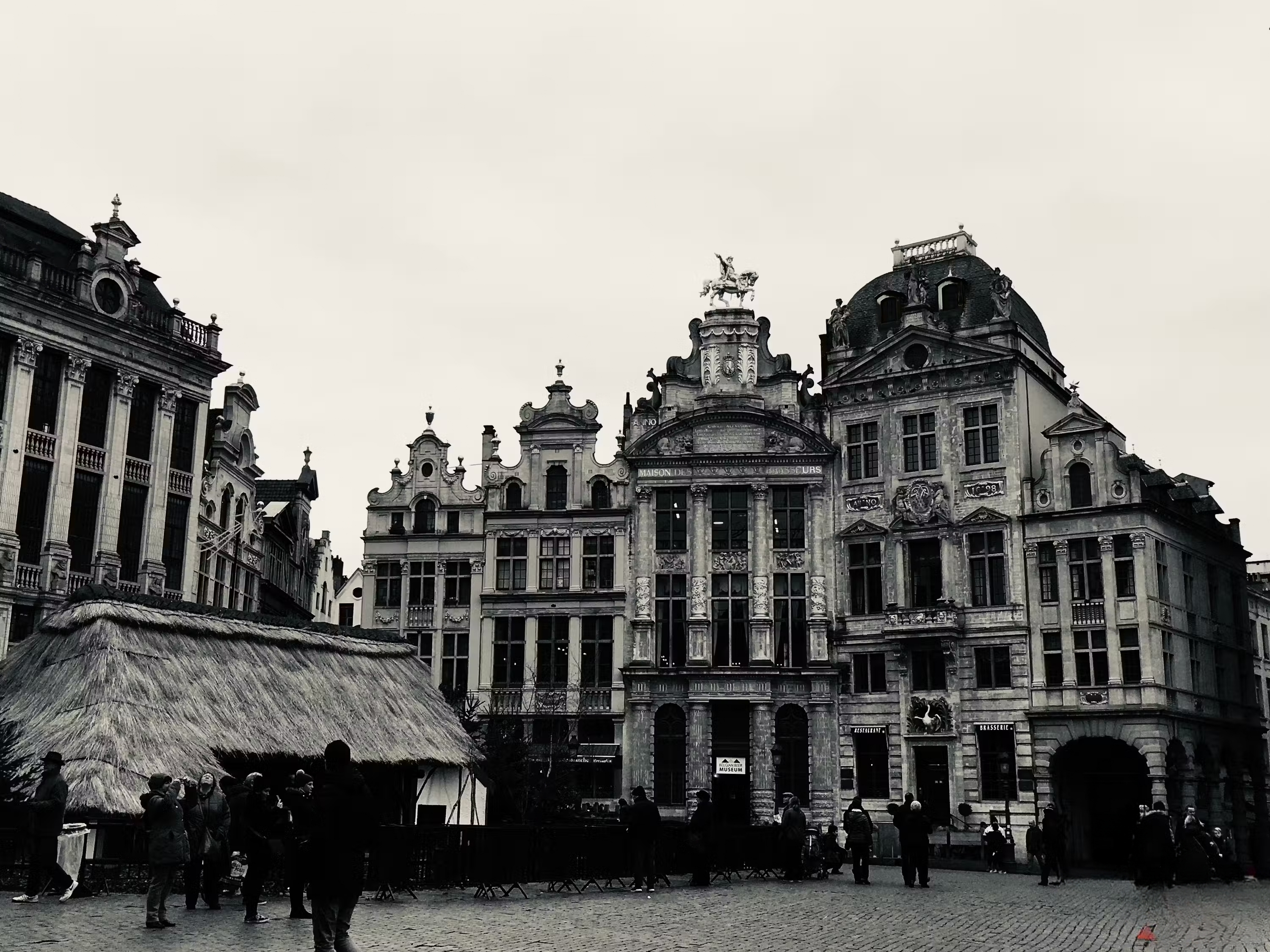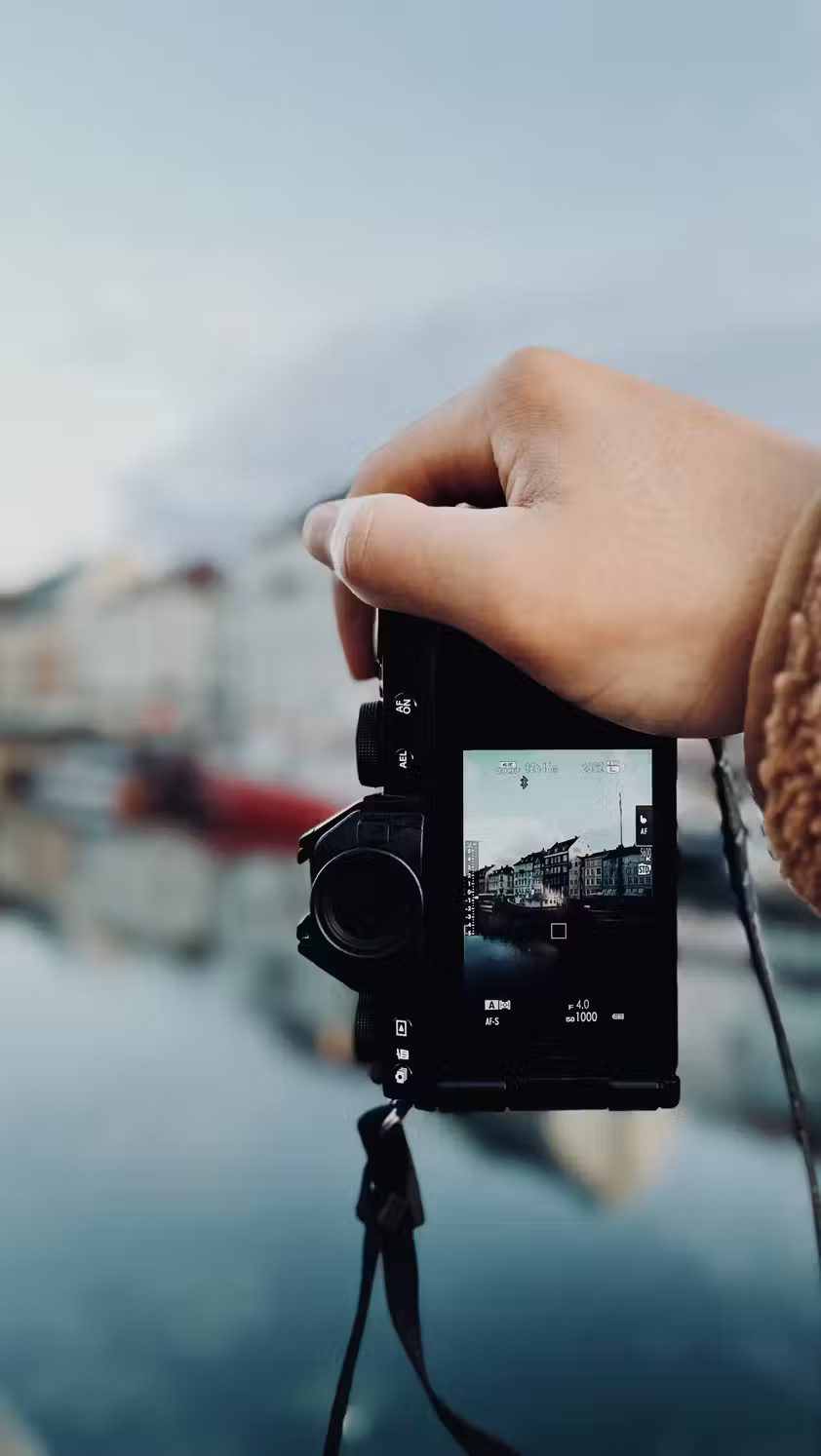5 great photography effects on mobile devices
This guide will share the types of photography effects you should learn about and includes example photos for each type. You'll also discover tips to make them work better.
1. Black and white photo effect

Black and white photography is one of the most fascinating genres of smartphone photography to learn. It works especially well with smartphones because reducing saturation in photos (while adding a bit of contrast) can take away the flatness that comes with phone photos.
Images can be desaturated in many ways. Many camera apps will allow you to choose a filter that removes color from your photo. On top of that, you can use filters on Instagram and other social media platforms. Additionally, apps like VSCO and Lightroom have presets that allow creating black and white photos.
2. Blur effect


You might think that the blur effect only involves using external lighting, but that's not the case. Bokeh can involve blurring other backgrounds, such as trees. If your smartphone has a function that allows you to control aperture, such as Aperture Mode on iOS, you have the option to experiment with this effect and see what the results will be.
When taking photos with bokeh, pay attention to how the background interacts with the subject. For example, you can make your subject really stand out by applying color theory to your creative projects. There are several ways to create a blur effect with the camera that also apply to smartphones, such as getting closer to the subject.
3. Shoot in film camera style

Film camera style shooting has quickly become the favorite shooting style of many people. You can create this effect on your smartphone in many ways.
VSCO and Lightroom are two options, but many people also like the DAZE CAM app (the downside is that it's only available on iOS).
- (In-app purchases available, free)
When creating film-style images, you can experiment with each of the following options:
- Add film particles
- Light leaks
- Add date in retro style
There are several other ways you can create Polaroid and film-style photos.
4. Take high-contrast photos

Taking high-contrast photos is usually something you do in post-production, and increasing contrast is a fairly easy slider in whatever photo editing software you use. High-contrast photography works best on overcast days and in scenes with lots of color.
5. Lens flare

Lens flare is quite difficult to achieve on a smartphone, but not impossible. You can create this effect by pointing your smartphone towards the sun or a bright light source. Some difficulties associated with this include the rest of the photo lacking detail and the light source not creating glare if you touch it.
Lens flare should be tested during periods of softer light, such as during golden hour. It is difficult to achieve good results when trying to shoot with this effect during the day, however, your situation may be different.
You should read it
- Photograph fireworks with smartphone camera
- How to take photos with more beautiful smartphone
- How to Email Photos from a Cell Phone
- Portraits of mobile subscribers can use photos in ID card instead
- How to automatically add photos to albums on Google Photo
- How to Integrate Photos in Photoshop
- How is AI impacting mobile photography?
- Facebook background web improvement photo editing tool, additional 6 color filters
May be interested
- Fun Birthday Photo Ideas for All Ages
 this article will give you great birthday photography ideas and concepts for all ages, including everything from random moments to posed shots.
this article will give you great birthday photography ideas and concepts for all ages, including everything from random moments to posed shots. - 7 tips for taking great city photos with your smartphone
 big cities also offer a great opportunity to take photos unlike any other you've ever taken, as long as you follow a few golden rules.
big cities also offer a great opportunity to take photos unlike any other you've ever taken, as long as you follow a few golden rules. - 5 best free photography learning websites
 here are 5 best photography teaching websites, the teacher who teaches almost everything you need to get the best photo.
here are 5 best photography teaching websites, the teacher who teaches almost everything you need to get the best photo. - Apple counts Android world for mobile photography with a host of quality additions to the iPhone 11
 as a big player in the market, apple has the ability to turn the iphone into a comprehensive phone.
as a big player in the market, apple has the ability to turn the iphone into a comprehensive phone. - August 19: Celebrating 177 years of World Photography Day
 august 19 is the day of world photography, the day to honor those who love photography. first held in france in 1893, this is an important milestone, marking the birth of the world photography industry.
august 19 is the day of world photography, the day to honor those who love photography. first held in france in 1893, this is an important milestone, marking the birth of the world photography industry. - Change these settings on your iPhone for stunning nighttime photos!
 iphone cameras have gotten a lot better over the years. these days, iphones take great night photos — but not by default. if your low-light shots look grainy or blurry, it's time to tweak your settings.
iphone cameras have gotten a lot better over the years. these days, iphones take great night photos — but not by default. if your low-light shots look grainy or blurry, it's time to tweak your settings. - Shadow in photography
 in photography, mastering light is an important premise to get a beautiful picture and one of the beauty that light creates is shadow.
in photography, mastering light is an important premise to get a beautiful picture and one of the beauty that light creates is shadow. - Download 1998 Cam, an old-fashioned animation and video capture app for iPhone, is now free
 1998 cam is a classic photography and video camera application with many effects such as film kiosk, polaroid camera, film dust, light trails, etc. to help users have vintage works right on their iphone.
1998 cam is a classic photography and video camera application with many effects such as film kiosk, polaroid camera, film dust, light trails, etc. to help users have vintage works right on their iphone. - Take a picture of the Cinematic Photography style
 cinematic photography is an entirely new type of cinematic photography. the photographer will do the color effect as well as adjust the aspect ratio to resemble the image taken from a movie.
cinematic photography is an entirely new type of cinematic photography. the photographer will do the color effect as well as adjust the aspect ratio to resemble the image taken from a movie. - Photographic tips that cast shadows in photography
 photographing shading becomes one of the photography topics chosen by many photographers. the drop shadow is completely different from the original image. depending on the shooting techniques and artistic look of each person, different products are produced.
photographing shading becomes one of the photography topics chosen by many photographers. the drop shadow is completely different from the original image. depending on the shooting techniques and artistic look of each person, different products are produced.










 9 useful tips for using Apple Watch you should know
9 useful tips for using Apple Watch you should know How to transfer files between virtual machines and PCs on VMware and VirtualBox
How to transfer files between virtual machines and PCs on VMware and VirtualBox What are Slack Lists? How to use it to organize work?
What are Slack Lists? How to use it to organize work? Did you know there are two different Microsoft Defender applications?
Did you know there are two different Microsoft Defender applications? Top best handheld game consoles 2024
Top best handheld game consoles 2024 Why does error 403 appear? How to prepare?
Why does error 403 appear? How to prepare?